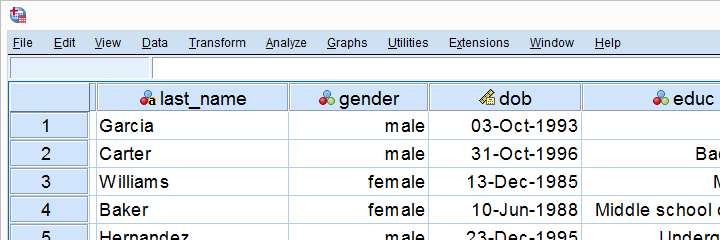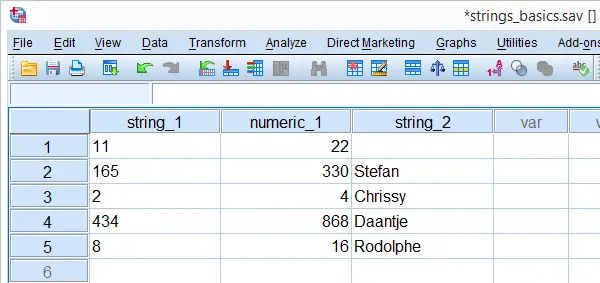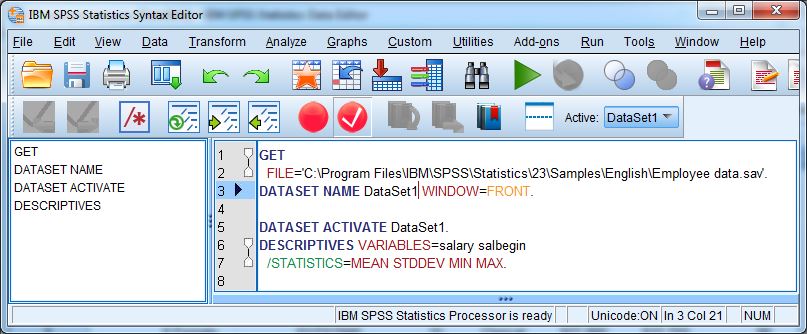
#Spss code new variable how to
The first example shows how to extract a variable from a data frame with the $-operator: 1 Answer1. txt file is not given but have to assign as a "income" column name in my data frame. Second, using base R to add a new column to a dataframe is not my preferred method. In the resultset tab mention the column name with the corresponding variable name where you want the value to be stored. Wadsworth Subsetting columns using indices. The ranking of a variable in an R data frame can be done by using rank function.


how to assign column names of my data frame by taking values from. a:f selects all columns from a on the left to f on the right). For example, the first column is called “C”, the second column is called “N. Here I am creating four data frames whose x and y variables will have a slope that is indicated by the data frame name. In R programming, assign () method is used to assign the value to a variable in an environment. A common way of renaming columns is to use the rename() function. Some variables represent observations that we want to re-group into a variable # with the observation, and other variable(s) describing what sort of observation is on that row. A variable is created the moment you first assign a value to it. rnames totscore % mutate (C = if_else (A = B, A + B, A - B)) Code language: R (r) In the code example above, we added the column “C”. table, the order of "amt" is changed as well. Note that assignment to an attached list or data frame changes the attached copy and not the original object: see attach and with. Grouped by 'id', create a 'new' column with the run-length-id ( rleid) of 'type' and a sequence column ('rn'), then get the 'count' by taking the number of distinct elements of 'new' less than 1 ('count') and 'change_of_type. If the column doesn't exist, it is added, by reference. If the word was not found, then the index result is 0 and so are the result of the logical relation and the value stored in the new variable, transfer.How to assign a column to a variable in r If the word was found in the string, then the result of the index function is greater than 0, meaning that the logical relation was true and a 1 is stored in the new variable, named transfer. UPCASE(details) translates details to all upper case (just for the search) and the search is then focused on 'TRANSFER'.įinally, the result of the index function is an argument in a logical expression. Instead of simply using the variable name, "details", as the first argument, UPCASE(details) is used to save the work of specifying various capitalization combinations.
#Spss code new variable full
So, if the variable named details is a 40-character string, the result of the index function will be an integer from 0 to 33 (since 33 is the last character where the full word "transfer" could start from). If the substring is not found, the result is 0. The index function searches the string named in the first argument for the substring described as the second argument, and returns the column number where that substring is first found. The operation of the functions is as follows, using the computation of transfer as an example: * similar computes for other search items here.


If you want a binary variable for each of your search items, equaling 1 if the word is found in the string, and 0 otherwise, the following syntax will work.ĬOMPUTE transfer = (INDEX(UPCASE(details),'TRANSFER') > 0).ĬOMPUTE degree = (INDEX(UPCASE(details),'DEGREE') > 0).


 0 kommentar(er)
0 kommentar(er)
